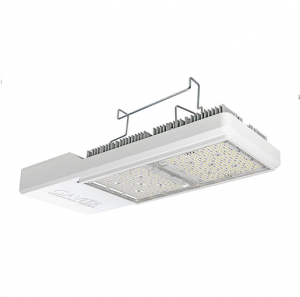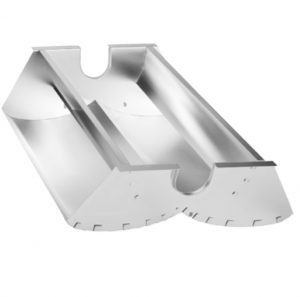Gavita EL1 Master Controller – Complete Lighting Control System
Ditch your Contactors and Get Access to a Ton of New Features!
The Gavita EL1 Master Controller represents a huge step forward for indoor lighting systems. Now you can replace your contactor / timer set-up by communicating with your ballasts directly via controller cables. The Master Controller system switches up to 40 ballasts from a central point and comes with an easy-to use interface and a clear display. If this wasn’t enough, the EL1 comes with a host of features that will increase safety, eliminate inrush current and lower the chances of experiencing botrytis (rot).
How the Gavita Master Controller Works:
The Gavita Master Controller switches up to 40 individual lighting systems from a central point. The Master Controller offers additional features that weren’t previously possible with traditional contactor / timer switching systems. It works by sending information to your ballasts directly via controller cables. Compatible ballasts, like the Gavita Digistar 600e, are supplied with RJ14 sockets to create a hard link between the ballast and the EL1 itself. By communicating with ballasts directly, this does away with the need for contactors and timers altogether. Instead, ballasts can be connected to a continuous power supply. This new system opens up the door to a host of new features.
The output levels of up to 40 ballasts can be raised or lowered manually in seconds with the Master Controller. The EL1 will even adjust light outputs automatically if heat levels in the grow area get too high, thanks to its ‘auto-dim’ setting. A temperature probe hangs in the canopy area away from direct light and feeds information back to the Master Controller. The Master Controller then uses this information to reduce the output levels of your lighting whenever necessary, ensuring that temperatures never stray above the optimal range (25°C to 28°C). You’ll never have to worry about fruits and leaves getting heat-stressed or burnt ever again! And you’ll have the peace-of-mind that your grow room is operating safely. The EL1 also has an auto-shutdown feature that shuts off lighting completely when temperatures reach your chosen setting, making it one of the safest options available.
Seasoned growers know that replicating plants’ natural conditions as closely as possible is the key to successful indoor gardening. In the outdoors, the transition from light to dark (and vice versa) is very gradual. However, when using a contactor and timer, lighting switches on and off almost instantaneously. The Master Controller’s sunrise/sunset feature takes care of this issue by easing the light levels up and down gently. You can even select the length of time that you’d like the lights to take to do this. The possibility of experiencing botrytis (rot) is then greatly reduced. If lights switch on suddenly, it takes a little while for the temperature of plant matter to reach an equilibrium with the temperature of the air in the room. During this period, the colder outer edges of fruits and leaves make contact with warm air. When warm air hits cold surfaces, condensation forms, and this causes big problems! Moisture sets into delicate areas, triggering botrytis (rot), which can devastate entire crops. By doing things gradually, you’ll greatly reduce the chances of this ever happening.
The EL1 also deals with issues to do with inrush current – a problem that particularly effects growers running multiple lighting systems, as ballasts tend to cause a spike in power when they are first switched on.
The Master Controller comes with RJ9 to RJ14 controller cables that utilize low voltage control currents to interact with ballasts. The RJ9 end plugs into the Master Controller and the RJ14 end plugs into a compatible ballast, like the Digistar 600e. Digistar E-Series ballasts come supplied with RJ14 to RJ14 cables, so that you can connect the next ballast in the chain to the previous ballast.
Related products
-

Gavita CT2000e LED Light
£1,099.95 Add to basket -

Gavita FB1 UK Fan Balancer
£99.95 Add to basket -

Gavita Wide 750/1000 DE Reflector
£39.95 Add to basket -

Gavita Original HR96 600 SE Reflector
£34.95 Add to basket -

Gavita EL1F & EL2F Master Controllers
£444.95 – £539.95Price range: £444.95 through £539.95 Select options This product has multiple variants. The options may be chosen on the product page -

Gavita EL2 Master Controller – Complete Lighting Control System
£467.95 Add to basket -

Gavita Pro E-Series 1000e – 1000w / 400v HPS
£499.95 Add to basket -

Gavita Pro E-Series 600e – 600w / 400v HPS
£399.95 Add to basket










